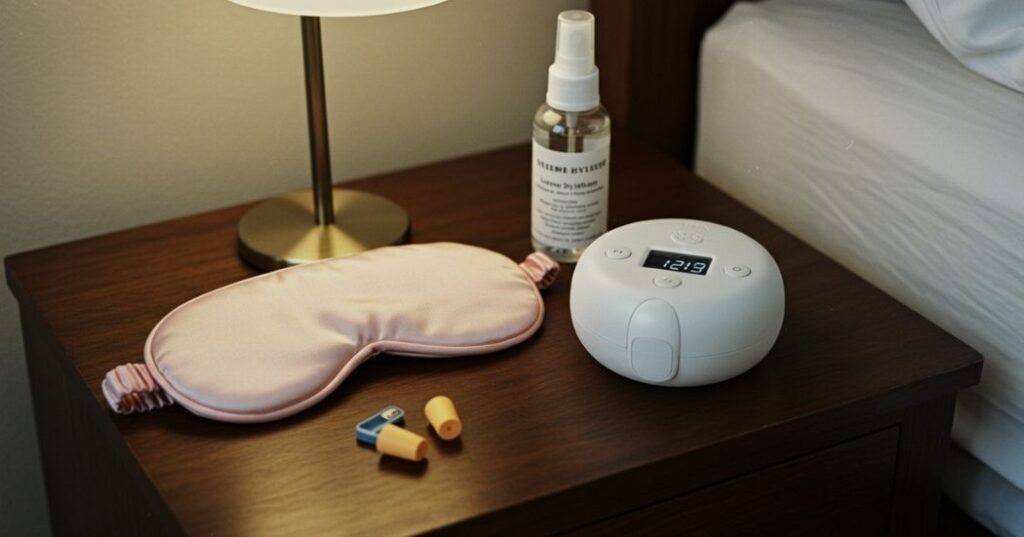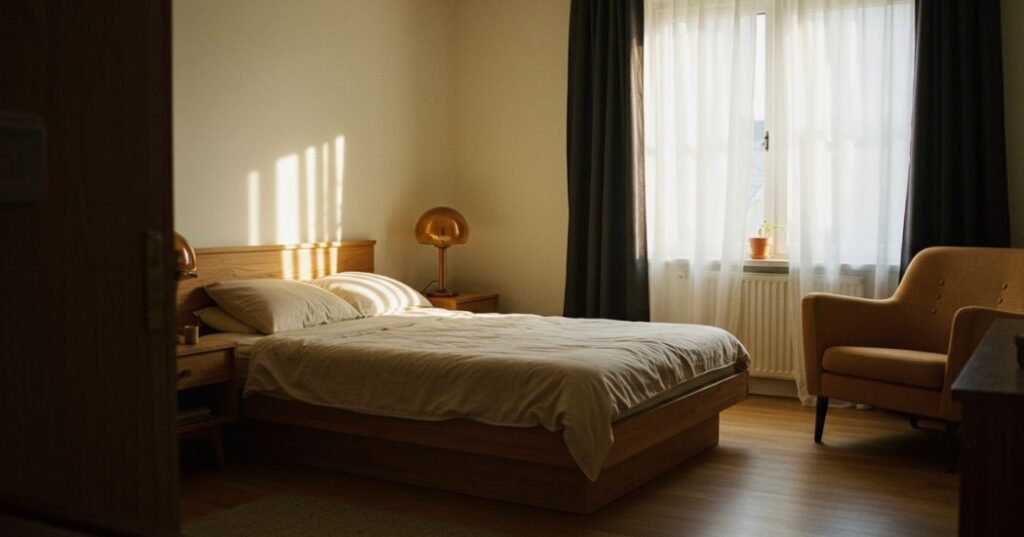Night shift work doesn’t just disrupt your schedule—it profoundly disrupts your biology. Your body’s internal clock, or circadian rhythm, is fundamentally wired for activity during daylight and rest during darkness. When you consistently flip this natural script, you’re not just fighting against your preferences; you’re fighting against millions of years of evolution.
If you’ve ever:
- Struggled intensely to fall asleep when the sun is beaming through your windows
- Felt perpetually jet-lagged, even when you haven’t left your city
- Cried in despair over your third (or fourth) cup of coffee at 4 a.m., just to stay upright
You’re certainly not alone. The challenges faced by shift workers are immense. This demanding lifestyle can profoundly mess with your circadian rhythm, suppress melatonin production (the hormone that signals sleep), and even compromise your immune system and metabolic health.
But here’s the good news: while you might not be able to change your work schedule, you can implement evidence-based strategies to protect your sleep—and by extension, your sanity, health, and well-being. This guide offers practical, actionable sleep hygiene tips specifically tailored for night shift workers.
Why Shift Work So Deeply Affects Sleep and Health

Night shifts can disrupt your body’s internal clock, making sleep harder to achieveThe human body is exquisitely designed around a 24-hour cycle, primarily regulated by light and darkness. When you work at night and try to sleep during the day, your body’s internal clock becomes misaligned with the external environment. This misalignment, known as circadian disruption, has far-reaching consequences beyond just feeling tired:
- Reduced REM and Deep Sleep: These are the most restorative stages of sleep, crucial for memory consolidation, emotional regulation, and physical repair. Shift work often leads to fragmented sleep, preventing you from spending enough time in these vital stages.
- Cortisol Spikes at Night: Cortisol, the “stress hormone,” is naturally high in the morning to wake you up and low at night to allow for sleep. For shift workers, this pattern often reverses, leading to elevated cortisol levels during your intended sleep period, making restful sleep elusive.
- Impaired Glucose Regulation: Chronic circadian disruption can interfere with insulin sensitivity and glucose metabolism, increasing the risk of type 2 diabetes.
- Increased Fatigue and Mood Swings: Persistent sleep deprivation and circadian misalignment contribute to chronic fatigue, irritability, anxiety, and a higher risk of mood disorders.
- Elevated Risk of Chronic Health Issues: Long-term shift work is associated with an increased risk of cardiovascular disease, obesity, gastrointestinal problems, and even certain cancers.
As highlighted by the CDC, shift workers face a significantly higher risk of experiencing sleep disorders, industrial accidents, and a range of chronic health issues compared to those working traditional daytime hours. This isn’t just about feeling tired; it’s a serious public health concern.
7 Essential Sleep Hygiene Tips for Night Shift Workers
These strategies are designed to help you create an optimal sleep environment and routine, mitigating the biological challenges of shift work.

1. Protect Your Sleep Window (No Exceptions)
Your post-shift sleep is as critical as your work duties. Treat it as a non-negotiable appointment in your schedule. Aim for at least 6–7 hours of dedicated sleep, even if it has to be split into two segments (e.g., a primary sleep block and an anchor nap). Inform family and friends about your sleep hours and ask for their cooperation.
Remember: “I work nights” is not a substitute for “I don’t need sleep.” Your body needs rest, regardless of when you get it. Prioritizing this window is the cornerstone of your well-being.
2. Implement Blackout Everything: Mimic Nighttime During the Day
Light is the most powerful cue for wakefulness. To effectively signal sleep to your brain during daylight hours, you must create an environment of profound darkness.
- Install Blackout Curtains or Window Films: Invest in high-quality, opaque curtains that completely block out all light. You can also use temporary window films for a complete light seal.
- Utilize an Eye Mask: Even with blackout curtains, light leaks can occur. A comfortable, snug-fitting eye mask (consider silk for comfort or weighted for gentle pressure) can make a significant difference.
- Seal Light Leaks: Don’t forget the small gaps! Place a towel under your door crack, cover any glowing electronics with tape, and ensure no indicator lights are visible.
Bonus Tip: Brands like SleepOut Blackout Curtains offer excellent solutions designed for total light elimination, making your sleep space truly cave-like.
3. Create a Cool, Quiet, Cave-Like Sleep Sanctuary
Beyond darkness, temperature and sound play crucial roles in sleep quality. Optimize your sleep space to resemble an ideal sleeping cave.
- Optimal Temperature: Aim for a bedroom temperature around 65°F (18°C). A slightly cooler environment signals to your body that it’s time to rest and facilitates the natural drop in core body temperature required for sleep onset.
- Sound Control: Eliminate or mask noise. Use a white noise machine (which provides a consistent, soothing background hum) or high-quality earplugs to block out daytime sounds like traffic, neighbors, or household activity.
- Minimize Disturbances: Keep your phone on silent or, even better, place it in another room entirely. Avoid checking notifications right before attempting to sleep.
4. Strategic Caffeine Cutoff: Know Your Limit
Caffeine has a half-life of about 5-6 hours, meaning half of it is still in your system after that time. For a night shift worker, this requires careful planning.
- Strict Cutoff: Implement a strict caffeine cutoff at least 6 hours before your intended sleep time. If your shift ends at 7 a.m. and you plan to sleep by 8 a.m., your last caffeinated beverage should be no later than 2 a.m.
- Hydrate Smart: Switch to herbal teas (chamomile, peppermint, ginger), plain water, or electrolyte mixes in the latter half of your shift. These options hydrate you without stimulating your nervous system.
5. Wear Blue Light Blockers on Your Way Home: Shield Your Eyes from the Sun
Morning sunlight is a powerful signal to your brain to halt melatonin production and initiate wakefulness. As a night shift worker, you want to delay this signal until after your sleep.

Controlling light exposure helps shift workers reset their sleep-wake cycles- Amber-Lens Glasses: Immediately after your shift, put on amber- or orange-tinted blue light blocking glasses. These specifically filter out the blue wavelengths of light that are most effective at suppressing melatonin and signaling wakefulness.
- Physical Barriers: Wear a wide-brimmed hoodie and a cap to further shield your eyes from direct sunlight on your commute home.
- Minimize Brightness: Avoid looking directly at bright screens (like your phone) during your commute.
Product Suggestion: Brands like Swanwick Blue Light Glasses offer effective options for blocking blue light, crucial for managing your circadian rhythm.
6. Nap Smart During Long Shifts: Anchor Naps and Booster Naps
Strategic napping can significantly reduce your sleep debt and improve alertness, especially during long or multiple consecutive night shifts.
- “Anchor Nap” Before Your Shift: If possible, take a longer nap (e.g., 90 minutes for a full sleep cycle) before your night shift begins. This is an “anchor” that helps reduce your sleep deficit before you even start work.
- “Booster Nap” On Break: If your workplace allows, a short 20-minute booster nap during a break in the middle of a long shift can dramatically improve alertness, cognitive function, and mood for the remainder of your shift.
- Avoid Deep Naps: For in-shift naps, keep them short to avoid deep sleep stages, which can lead to grogginess upon waking.
7. Stick to a Reset Routine on Days Off: Avoid the Weekend Warrior Trap
It’s tempting to completely flip your schedule back to “normal” on your days off, but this creates constant, jarring shifts for your circadian rhythm, similar to perpetual jet lag.
- Gradual Adjustment: Instead of a full flip, aim for a compromise schedule. For example, shift your sleep window gradually by 2-3 hours on your first day off, rather than an immediate 8-12 hour jump.
- Consistent “Morning” Light Exposure: Whenever your “morning” is (whether it’s 10 AM or 1 PM on your days off), make sure to get light exposure to anchor your adjusted rhythm.
- Limit “Catch-Up” Sleep Excessively: While some catch-up sleep is natural, trying to recover all lost sleep in one or two massive sleep sessions can further confuse your body’s clock. Aim for consistent, slightly adjusted sleep.
Real Talk: Maria’s Night Shift Routine Transformation
Maria, a dedicated ER nurse, used to dread her night shifts. She’d finish her 12-hour shift feeling “hungover,” exhausted, and prone to emotional swings. Her attempts to sleep during the day were often futile, leading to extreme fatigue.
After adopting these strategies, Maria implemented a new routine. She invested in professional blackout blinds and a comfortable eye mask for her bedroom, transforming it into a dark sanctuary. She strictly adhered to a 1 a.m. caffeine cutoff, switching to herbal tea for the latter half of her shift. Critically, she started wearing her amber-tinted blue light blockers the moment she left the hospital, shielding her eyes from the morning sun on her commute. She also integrated 200mg of magnesium glycinate and 3g of glycine into her post-shift winding down routine.
Within a few weeks, Maria’s energy and mood dramatically improved. She found it easier to fall asleep in her darkened room, experienced more consolidated sleep, and woke up feeling significantly more refreshed, even after demanding 12-hour overnights. Her transformation is a testament to the power of consistent, smart sleep hygiene.
Your Recovery Toolkit for Shift Workers
Beyond lifestyle adjustments, certain supplements can provide valuable support for your unique needs as a shift worker:
- Magnesium Glycinate: Essential for calming the nervous system, relaxing muscles, and supporting natural GABA activity. Take 200-400mg before your post-shift sleep.
- Glycine: Helps to lower core body temperature, signaling sleep, and supports overall sleep architecture. Consider 3g dissolved in water before bed.
- Melatonin Microdose (0.3mg): For circadian rhythm support, not dependency. A very low dose (0.3mg, not the common 3-10mg) can be taken about 30-60 minutes before your desired sleep time to help signal darkness to your brain. This dose is considered physiological and less likely to cause dependency or grogginess compared to higher doses. Use this primarily when trying to establish a new sleep rhythm.
- Sunrise Alarm Clock: While you sleep during the day, a sunrise alarm clock can still be incredibly beneficial on your “morning” to gently wake you up with gradually increasing light, mimicking a natural sunrise and gently signaling wakefulness to your body, especially on your days off or adjusted schedule.
Final Thoughts: Thrive, Don’t Just Survive
You may not control the demanding nature of your shift schedule—but you can absolutely control how effectively you recover and manage your sleep. By implementing these evidence-based tools and consistently adhering to a robust sleep hygiene routine, shift workers don’t just survive the challenges; they can genuinely thrive, protecting their health, well-being, and performance for the long haul. Your commitment to sleep is a commitment to yourself.
Working nights shouldn’t mean sacrificing your health or happiness. Download our comprehensive Shift Worker Sleep Kit to gain the knowledge and tools you need to protect your rest and energy—on your schedule. What’s one change you’ll make tonight to prioritize your sleep?
🔗 Keep Optimizing Your Sleep Hygiene
Want to strengthen your shift-friendly sleep routine even further?
Explore these next steps:
- → How to Build a Sleep Routine That Lasts: Are You Ready for Change?
- → 3 Simple Steps to Your Best Sleep Routine: A Beginner’s Guide
- → How to Build a Circadian Rhythm Reset That Lasts
These small upgrades make a big difference—especially when you’re working against the clock.
📚 References
- Drake, C. L., et al. (2004). Shift work sleep disorder: Prevalence and consequences beyond that of symptomatic day workers. Sleep, 27(8), 1453–1462.
https://doi.org/10.1093/sleep/27.8.1453 - Sack, R. L., et al. (2007). Circadian rhythm sleep disorders: Part I, basic principles, shift work and jet lag disorders. Sleep, 30(11), 1460–1483.
https://doi.org/10.1093/sleep/30.11.1460 - Akerstedt, T. (2003). Shift work and disturbed sleep/wakefulness. Occupational Medicine, 53(2), 89–94.
https://doi.org/10.1093/occmed/kqg046